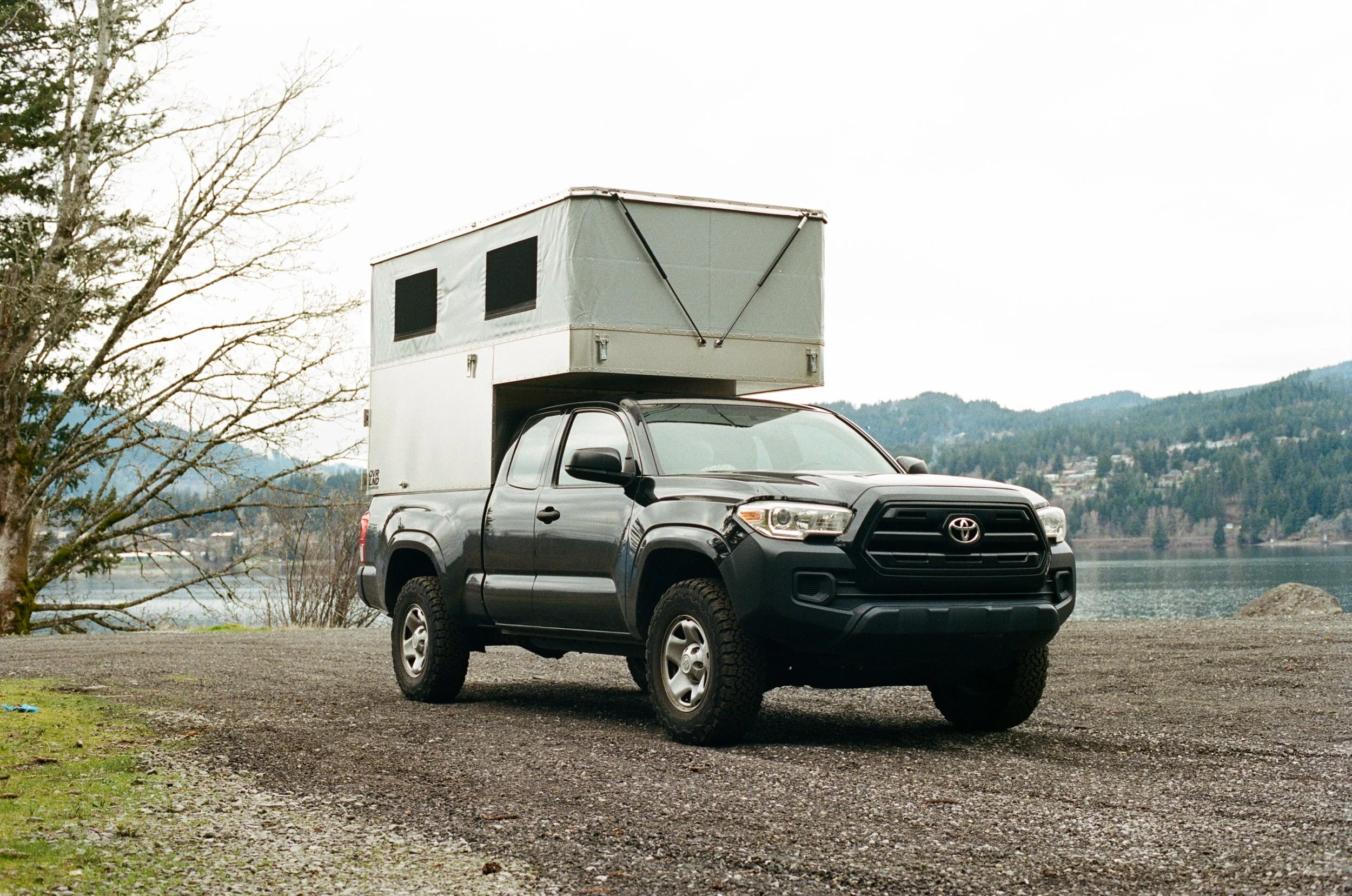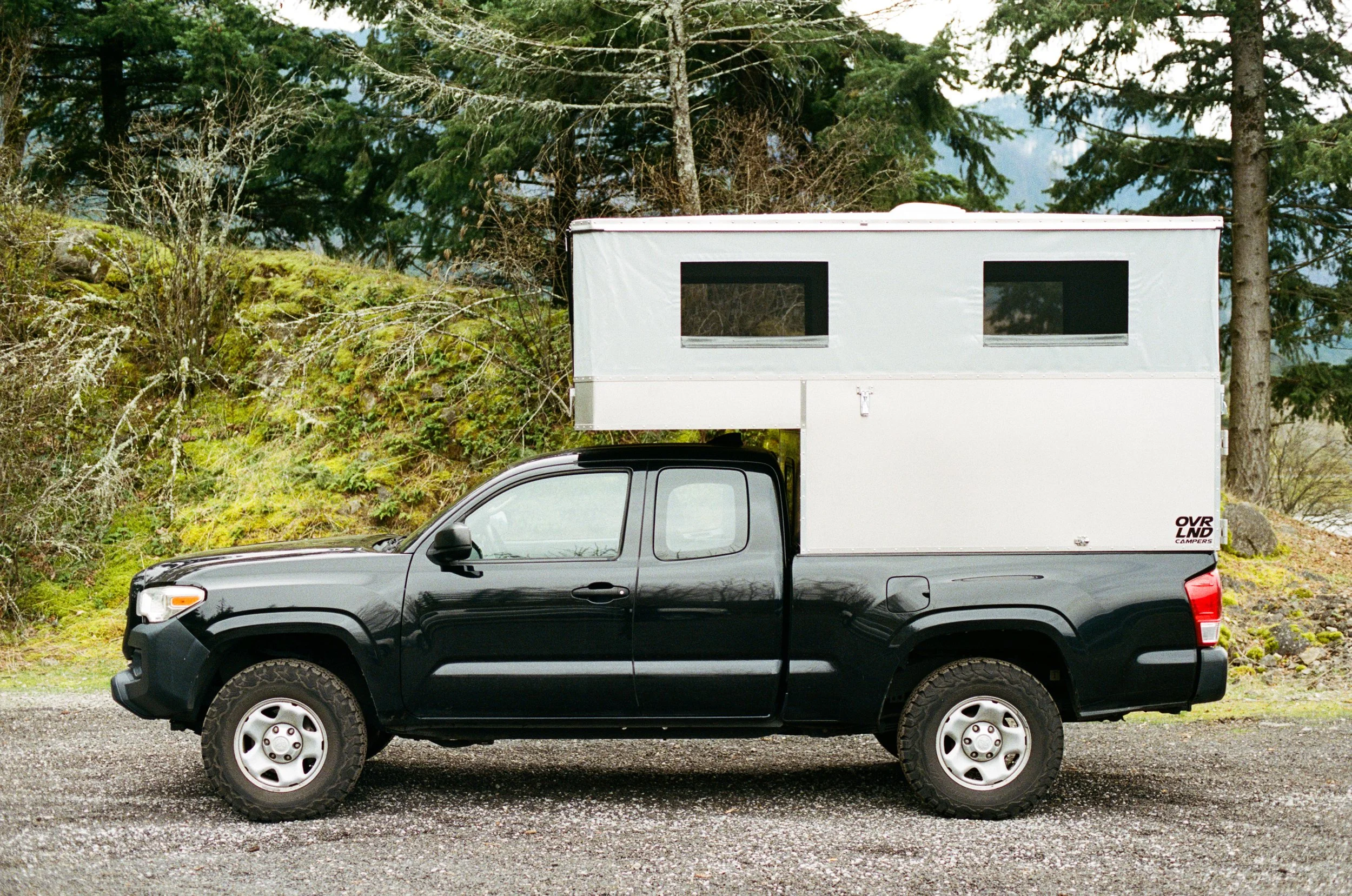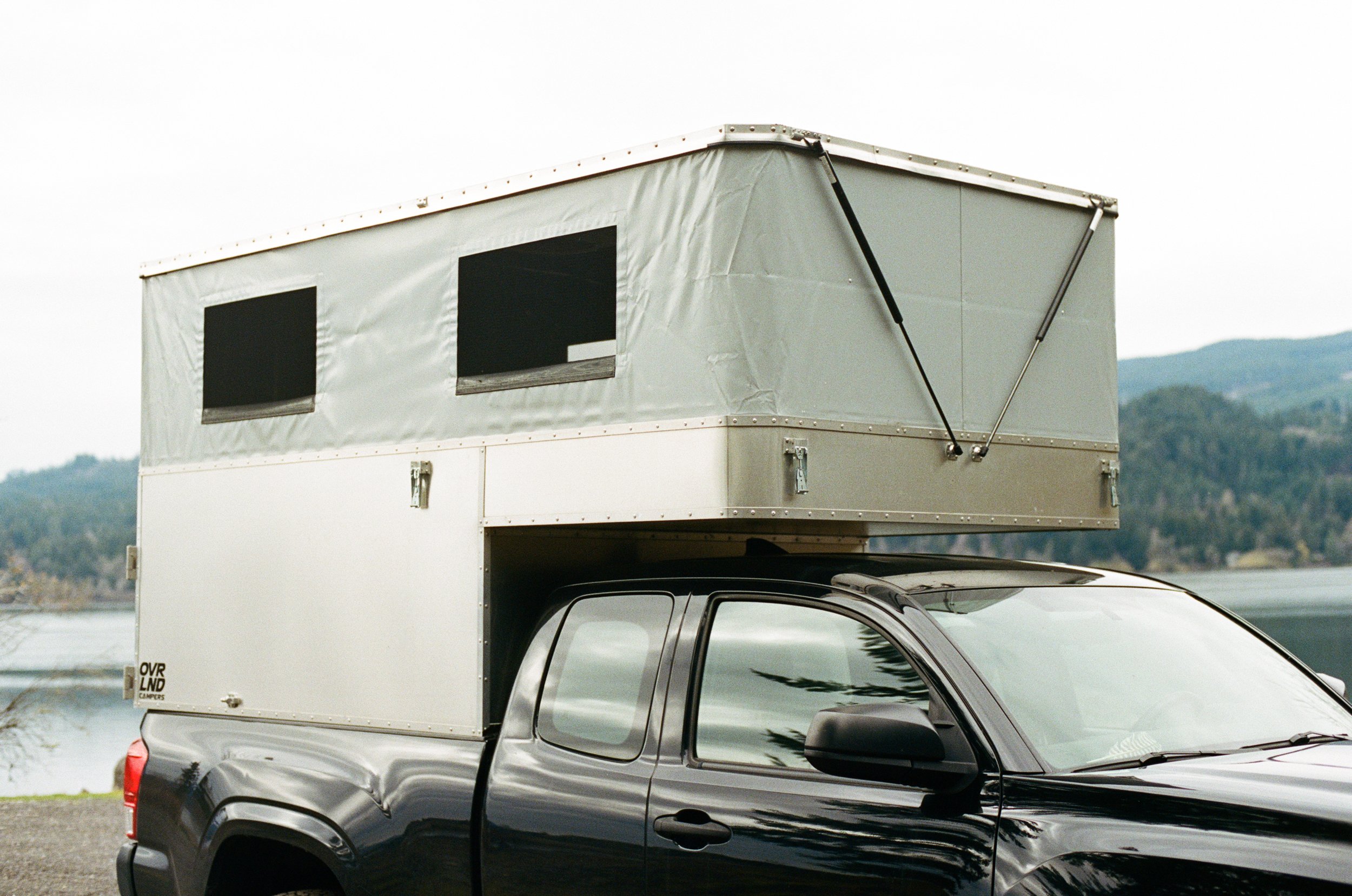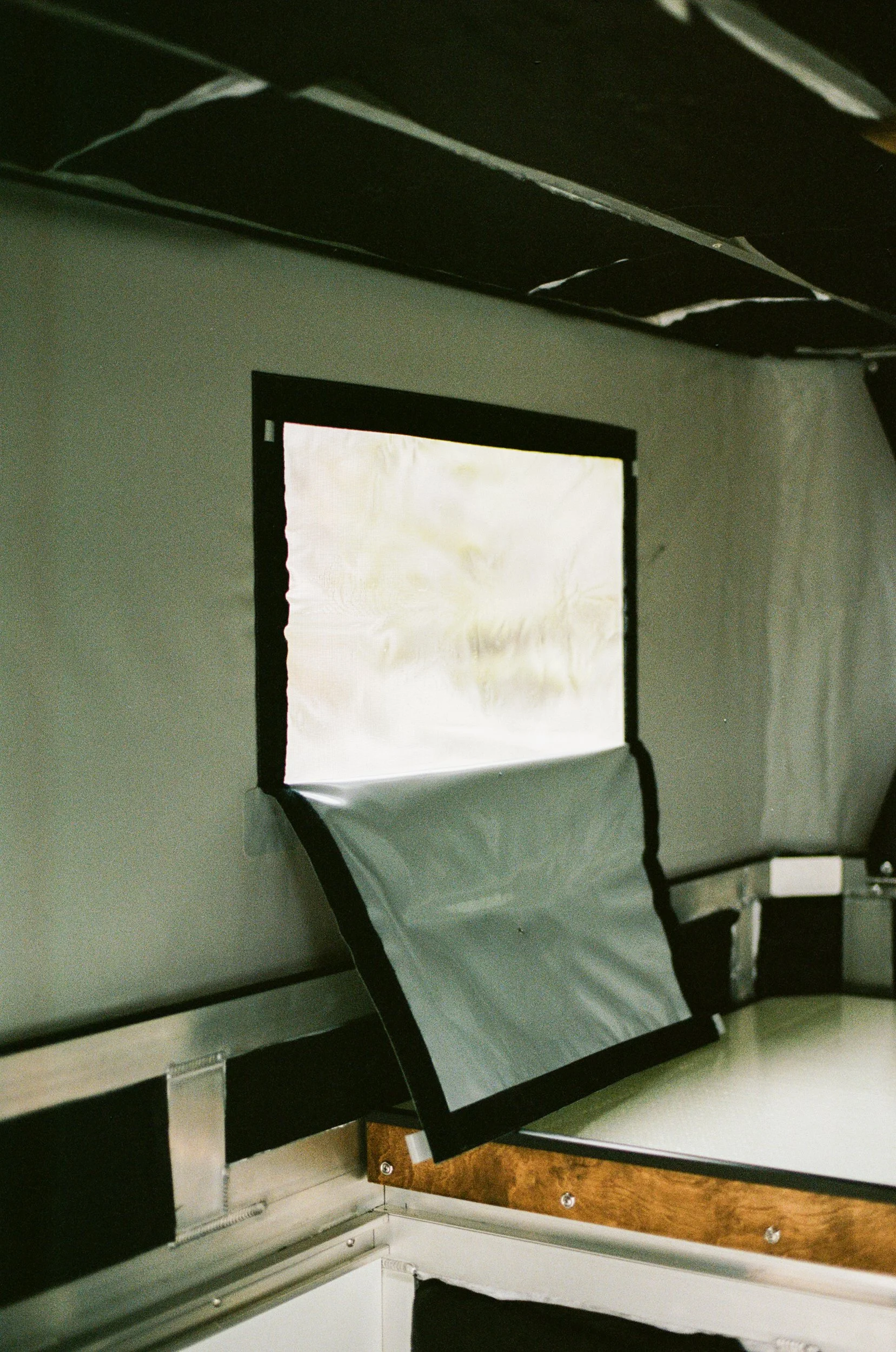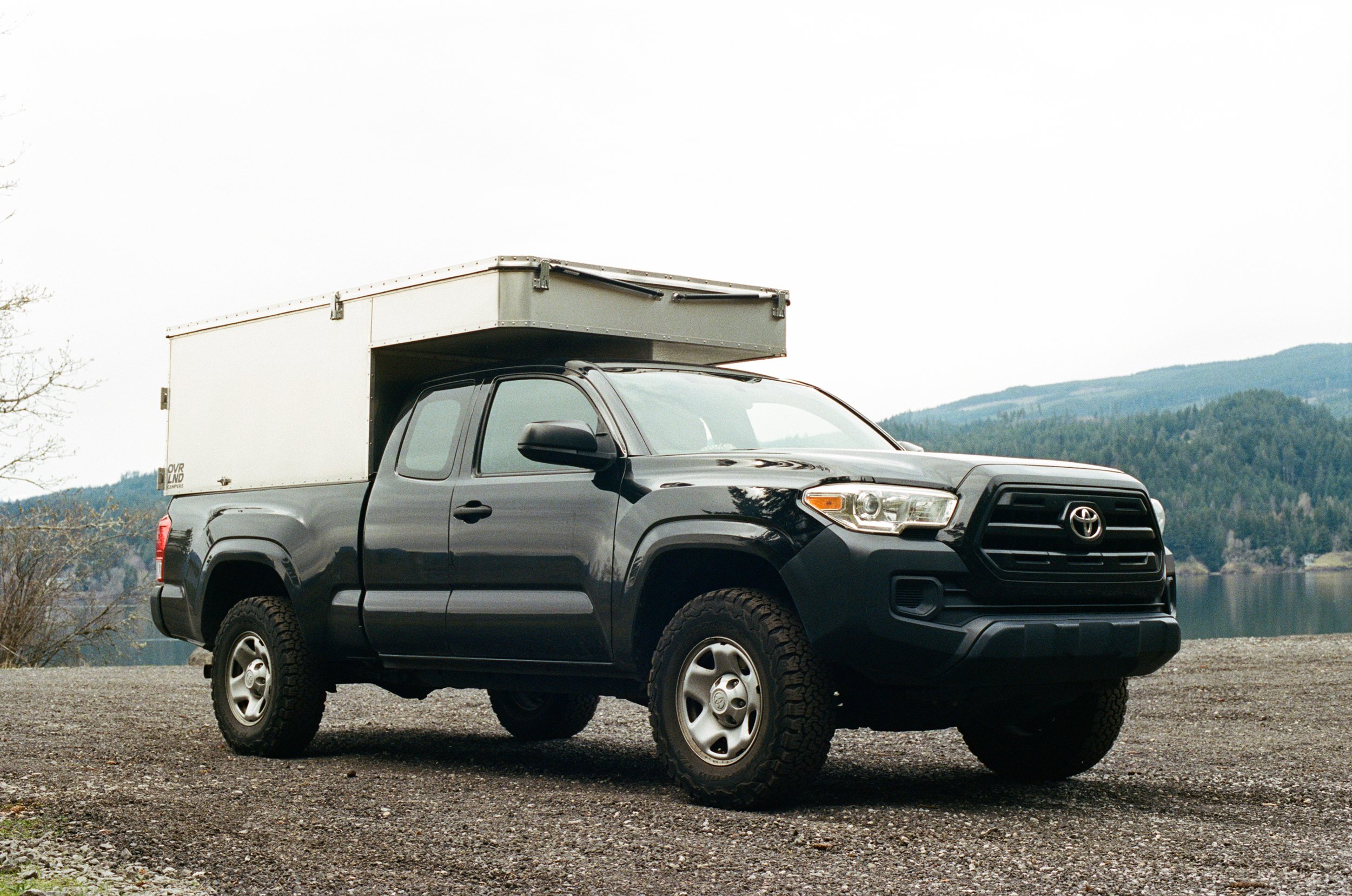OVRLND Camper Review
I was neurotic for quite some time, spending countless hours researching and evaluating every possible option for vehicle-dwelling. I compared factors like fuel efficiency, pricing, weight, payload, and use cases for slide-ins, vans, and travel trailers. I even made lists of essentials, desirable items, and luxuries. I had so many notes, spreadsheets, and restless nights that, frankly, it became less enjoyable than it should have been.
I surfaced for air in December 2021, putting down the deposit with OVRLND Campers.
Having now spent many nights in it, I am prepared to share some opinions. I’ll start with the basics.
Build Specs
Camper - Mid-size for 6’ Tacoma Bed
Included Options:
Composite Queen Bed (The bed platform is made of 61”x40” sheets of a material called ‘honeycomb.’ It’s lightweight, load-tested to 500lb, and semi-translucent. The top sheet extends onto a rail system, creating a full-size queen bed 61”x80”)
Grey Canvas Siding (PVC Coated Polyester. This stuff is as strong and waterproof as they say.)
Four Windows with Bug Netting (Canvas covers these four windows via a velcro perimeter. When all four windows are open, an extraordinary amount of light is let in, along with ample airflow.)
Mill Aluminum Siding (The basic option.)
My Add-Ons:
Rear Barn Doors (The doors swing away and latch to the side of the camper. I’ve loved standing up on my tailgate while the camper is open. And they look awesome. That counts for something.)
Extra Bedding Height (I added 2” to the total height of the camper, and I’m glad I did. This creates a cabover space that measures 10” when the top is down, which allows me to store my mattress over the cab full-time.)
Clear Vinyl Window Between Netting and Canvas (I opted for very few lower windows, so having the ability to keep the upper windows open, even in the event of a rain storm, was necessary.)
Maxxfan, Intake, and Exhaust (This is my second favorite feature. On hot days, I open all four windows and set the Maxxfan to exhaust. This creates a ton of airflow and keeps the camper cool. In hindsight, I would have gone with the ‘exhaust only’ model because I haven’t found many uses for Intake.)
What I like:
Roominess. I am still surprised at how roomy it feels whenever I pop the top. I’m about six feet tall, and there’s more than enough headroom. I’ve been in wedge campers, too, and they feel much smaller.
Separate From Chassis. Should something happen to my truck, I can put this OVRLND camper on any Gen 3 Tacoma and be ready to go again.
Lightweight. The OVRLND camper only weighs 300 lbs. Perk one - I’m well within my GVWR. Perk two - I still get decent gas mileage.
Low Profile. As someone attracted to tight forest service roads, the size and nimbleness are a considerable benefit.
Straight Walls. Straight walls are easy to insulate, easy to panel, and easy to modify.
Looks. When lowered, the OVRLND camper looks more like a utility topper than a mobile home.
Elevated Sleeping. This is my favorite feature. It feels like sleeping in a tree house.
Cost. If you already have a truck, this is a relatively affordable option. Not to mention, there’s no additional RV insurance required.
What I don’t:
Condensation. The Achilles heel of almost all pop-up campers. Cold metal sweats when warmer air (like body heat) is introduced. Insulation helps.
The Toyota Bed Leaks. This has nothing to do with the camper itself, but it’s worth mentioning for those Gen 3 Tacoma owners reading. In 2016, Toyota updated the bed rail, and the new design created a 1/4-inch gap in the front corners. I didn’t do an excellent job sealing these corners before the camper installation, so they leak like a sieve. If you have a Gen 3 and purchase any camper top, SEAL THE BED RAIL FIRST. You’ll save yourself a massive pain in the ass down the road.
Conclusion:
I found through this process that the best approach was to balance needs, wants, and budget. Compromises exist with any mobile home. For example, my compromise was the level of discretion offered by a van versus a pop-up camper. Though pulling over anywhere and having immediate access to my living space was attractive, a van meant limited chassis options and likely more maintenance and fuel expenses. After months of weighing options, I went with OVRLND because:
I already had a truck
It’s lightweight and low-profile
It’s spacious and easy to build out
It was within my budget
I like the way it looks
Overall, the OVRLND Camper has exceeded my expectations, and I couldn’t be happier.
Since taking these photos, I have made significant progress on my camper build. I will be sharing more updates on my camper project in the upcoming weeks, so please stay tuned for that.
If you have any questions, please don’t hesitate to leave them in the comments section below.
Cheers!
Jon
